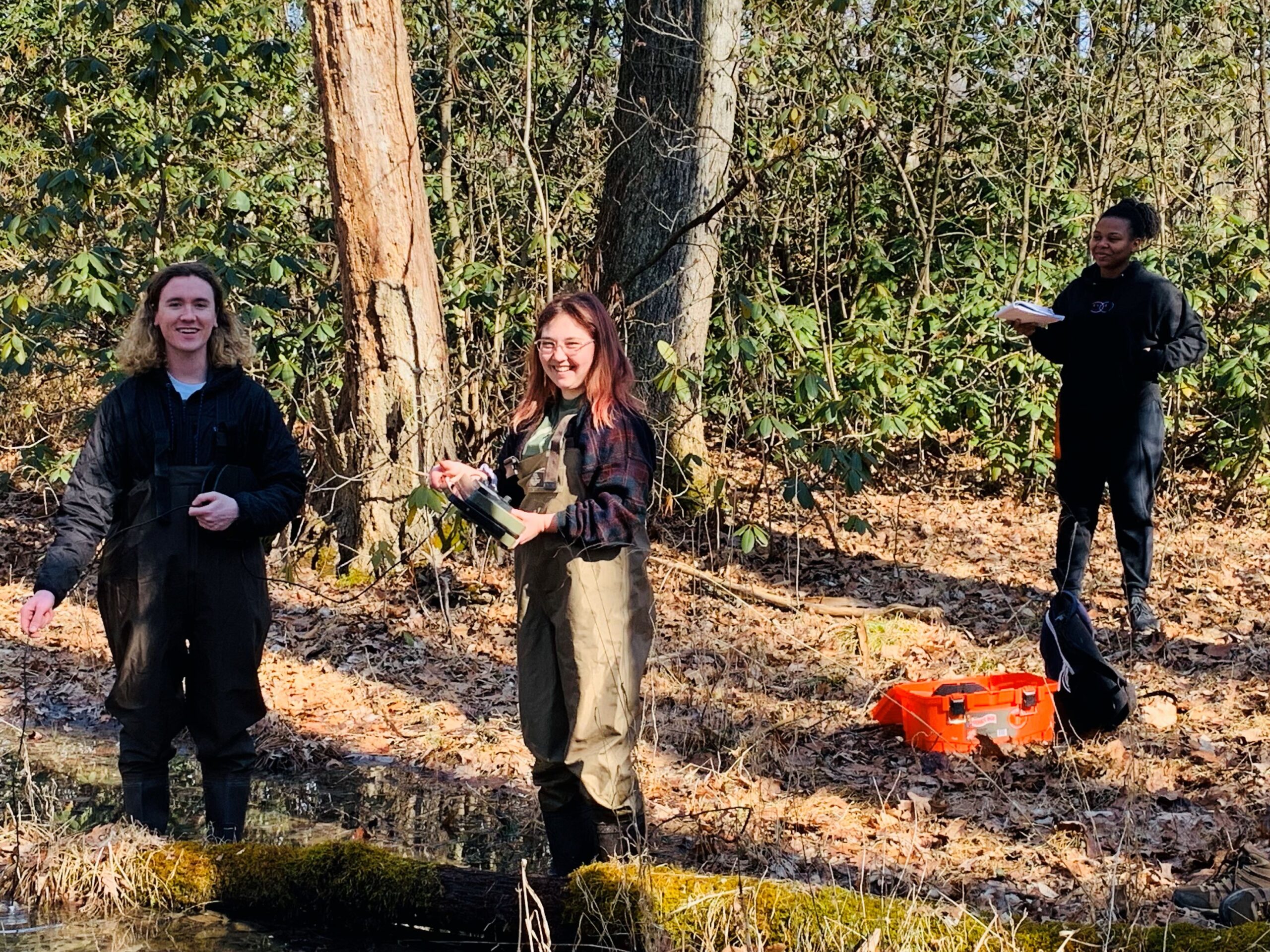
Declan Winters ’23, Madison Lebish ’23, and Eurnett Christopher ’25 collect environmental data from a restored vernal pool in Graver Arboretum during wood frog breeding in spring 2023.
Amphibians are more threatened than any other group of vertebrate animals. In fact, approximately 50% of amphibian species are listed as threatened by the International Union for the Conservation of Nature (IUCN) Redlist. The primary threat to amphibians is habitat destruction, and scientists estimate that at least half of global wetlands have been lost or severely degraded. In addition, amphibians are considered excellent bioindicator species mostly because of their sensitivity to environmental change, and they are often used by conservation and restoration biologists to screen ecosystem health. Declining populations of an indicator species highlight environmental problems likely to be affecting other components of the ecosystem. For all these reasons, my research group invests much effort into investigating human impacts on amphibians and developing approaches to conserve and restore populations.
Read more about the specific projects related to amphibian conservation:
